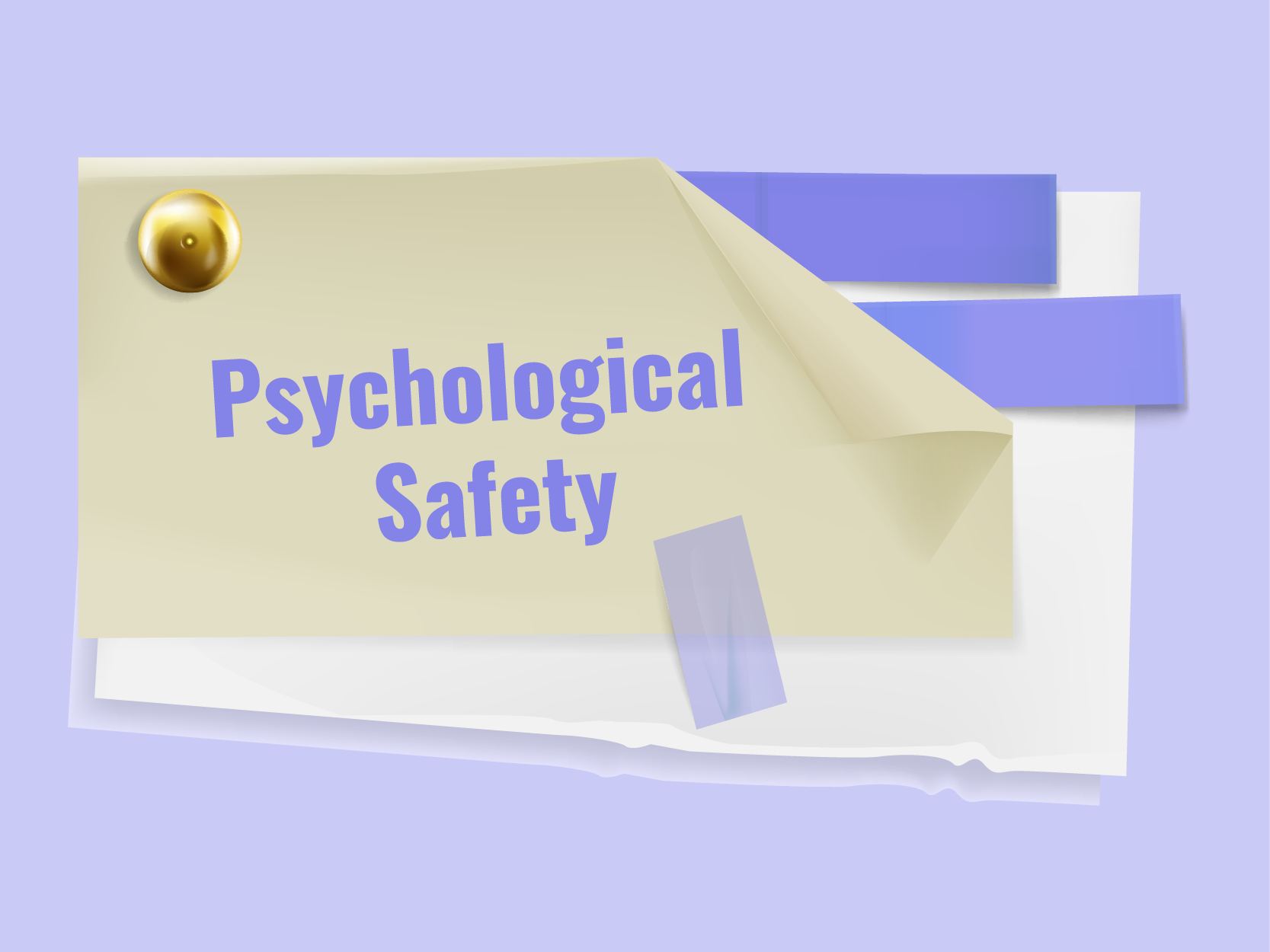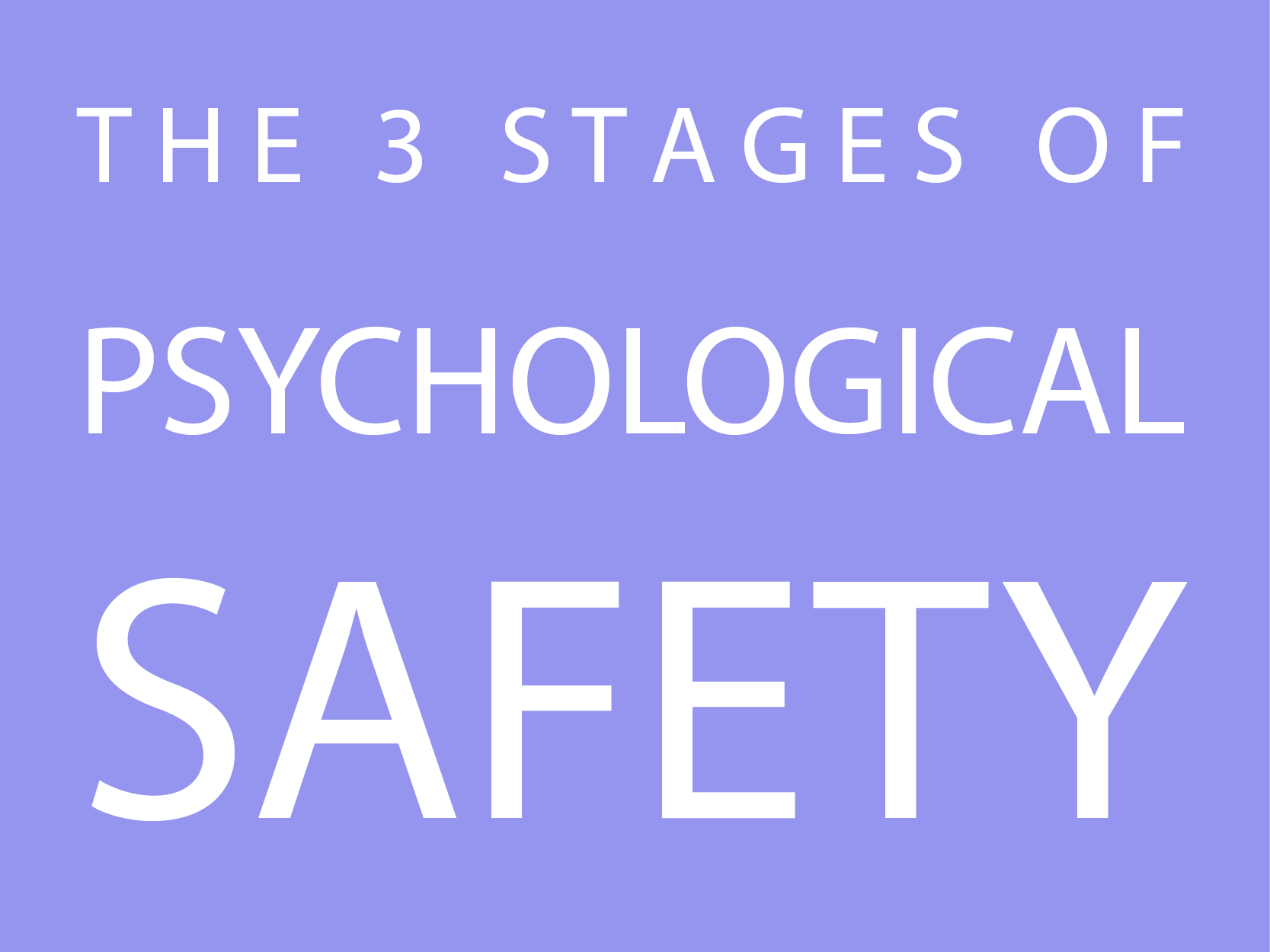Many Agile teams operate in an environment that is stressful and makes them tiptoe around their coworkers. In order to perform well, teams need psychological safety.
Psychological safety enables teams to function well, even in unpredictable circumstances, by allowing them to make mistakes without fear of repercussions, invent by attempting new and possibly dangerous endeavors, and address concerns or new ideas as they arise. In essence, psychological safety in Agile teams shouldn't be considered a luxury. It’s an absolute necessity.
This article will help you better understand the meaning of Agile psychological safety. Also, we will show you how to foster the development of a trustworthy work environment. But, first, let's start with the basics!
In this post:
What Is Psychological Safety?
Psychological safety is a shared belief held by team members that their workplace is safe for interpersonal risk-taking. In other words, the concept of psychological safety means feeling safe or feeling like you won't be punished if you fail to meet expectations. It also means you won't be punished or humiliated if you speak up with ideas, concerns, or questions.
Creating a psychologically comfortable environment helps people speak up and express their views. It also helps them take risks and learn from mistakes.

Who Is Responsible for Psychological Safety?
Even though psychological safety is a shared responsibility of everyone on the team, it is the Agile leader’s obligation to ensure psychological safety is present. Only they can foster an atmosphere that allows a high-performing Agile team to thrive and create value.
With that said, Agile leaders must recognize that they have a significant role to play. They can aid in the induction of high psychological safety by reinforcing it, having uncomfortable conversations, participating in conflict resolution, and eliminating (or addressing) team members who pose a threat to psychological safety.
For an Agile team aiming to strengthen and establish psychological safety, the hiring process might be an excellent place to start. Psychological safety can be practiced even before a person joins the company. Agile team leaders can ask questions about psychological safety when interviewing potential team members.
But why should a team leader bother so much to create a psychologically safe environment? The answer lies in the next section!
Why Is Psychological Safety Important?
You might be wondering why psychological safety is so important. Why would an Agile team leader put time and effort into making team members feel psychologically safe?
One reason is that a psychologically safe environment can significantly improve the productivity of an Agile team. By allowing people to fail without fear of punishment, teams can experiment with ideas and remain innovative.
Here are a few other significant benefits of implementing psychological safety in teams.
Enhances Employee Engagement
Employees who feel comfortable and psychologically safe at work tend to be more engaged and happier with their jobs. It's easier for team members to participate in team meetings, solve problems, cooperate on projects, and communicate with clients and peers when they feel comfortable at work.
This leads to better job satisfaction, improved performance, and increased productivity.
Fosters an Inclusive Workplace Culture
If team members don't feel they can speak up, their ideas and opinions won't be heard. In turn, the entire company culture will suffer from a lack of diversity in thought.
Regardless of gender, color, race, background, or political opinions, safe workplaces embrace diverse teams and allow all team members to thrive. As a result, everyone feels linked and part of a united front in a rich give-and-take experience.
Inspires Creativity and Ideas
Creativity and ideas are important for an Agile team because that is the only way to remain innovative within a rapidly-changing business environment.
When team members aren't afraid to speak up, they can engage in comfortable sharing of opinions about the company's products and services. Team members must feel comfortable expressing themselves for creativity and ideas to flow. Consider how many brilliant ideas were never shared because a team member was afraid to do so.
Increases Employee Well-Being
A psychologically safe environment increases productivity, creativity, engagement, inclusiveness, and improved performance. This results in better mental health for team members who feel free from judgment. In turn, reduced stress from a psychologically safe workplace can lead to higher job satisfaction and decreased absenteeism rates.
Creates Brand Ambassadors
Employees who work in psychologically safe environments want to share their positive experiences with others. Not only will they be more engaged, but they'll also act as brand ambassadors for the company.
People are more likely to recommend a business to friends, family members, and peers if they feel comfortable there.
Reduces Employee Turnover
Many studies show that employees are less likely to look for new jobs when they feel psychologically safe in their current roles. In turn, lower turnover rates result in increased productivity and decreased costs related to finding, interviewing, hiring, and training new team members.
Boosts Team Performance
When employees feel psychologically safe, they're more likely to engage with each other and exercise their problem-solving skills. The result is a high-performing team that delivers results on time and within budget.
Now that you know something as simple as building empathy and creating an open and honest environment can have so many benefits, let's focus on your team. Do they feel safe? And how can you find out the answer to this question? Keep reading to find out!
How to Know if Your Team Feels Safe
If you notice your team members are afraid to communicate, speak up, disagree with each others' ideas, or fail at tasks, it is very likely your team doesn't feel psychologically safe.
Here are a few more factors that will help you measure psychological safety for your Agile team.
Reduced Participation in Meetings
Do your team members participate in meetings? If not, there are two possible reasons. Sometimes, the silence is caused by indifference or a lack of interest. Other times, it may be caused by a fear of speaking out.
If team members feel insecure about their ideas and opinions, they'll be less likely to voice them. Eventually, they might stop participating in meetings altogether. What can you do?
Be aware of how you react to different people's participation during a meeting where debate is critical. Team members can be discouraged from participating if team leaders tend to interrupt the person speaking or endorse someone's ideas before everyone has had a chance to weigh in.
Team Members Rarely Share Mistakes
When team members are afraid of being judged, they're less likely to admit when they make a mistake. Instead, they'll try to cover it up or hope that nobody finds out about the slip-up.
An even worse scenario is when the team fails to meet their goals, and the meeting turns into finger-pointing. Why? Well, it’s most likely because their team leader has a certain response to mistakes or failure that makes them feel uncomfortable or even scared.
To enable psychological safety at work, your team members should be able to admit mistakes openly. The next time a mistake is made, watch your reaction. Instead of blaming or "attacking" your team members, try to react in a way that will encourage an open discussion about what went wrong.
Employees Don't Ask for Feedback
When people are afraid of being judged, they're less likely to ask for feedback. They may even start avoiding certain tasks or roles that will require them to show what they’re made of and interact with their teammates.
If an employee isn't performing well, consider the way you give feedback. For example, subtly point out their poor performance but then ask them, "What could I have done to better support you?” If your employees don't feel safe enough to ask for feedback, you can try offering it yourself.
Do any of these situations seem familiar to you? If so, you need to increase psychological safety at your organization, and here's how you can do it.
The Stages of Psychological Safety
Before you learn how to create psychological safety in teams, you need to be familiar with the stages of psychological safety.

Setting the Stage for Psychological Safety
When there's a high level of trust and open, supportive communication between team members, you're ready to build psychological safety. People feel safe when they can express their emotions openly and talk about mutual fears without fear of judgment.
It is recommended to set shared expectations with open discussions about the complexity, risks, and uncertainty involved in the project. Team leaders need to go first and share their mistakes and failures, as well as what they've learned from them. Then, it is necessary to openly talk about the challenges and risks the team will be facing. This way, the employees will feel more comfortable speaking up.
Invite Engagement
To create an environment where people feel comfortable sharing their thoughts, feelings, and ideas, you need to "invite" them to do it first.
Express real interest in learning from your team members—without passing judgment. Ask questions that demonstrate you are paying attention. Create processes that encourage people to share their ideas and discuss mistakes openly in order to find a way to correct them.
Respond Productively
After people have shared their thoughts, feelings, and ideas, your next step is to respond productively. This means you must react appropriately to each situation.
For example, if someone makes a mistake or fails at something, reacting with anger will increase the fear of being judged on future mistakes. Instead, ask questions to understand what went wrong so your team members can learn from this mistake and prevent it from happening again.
After learning how to introduce Agile psychological safety to your team, it’s time to discuss what you can do to increase it further.
How to Increase Team's Psychological Safety
Building psychological safety at work is not an easy thing to do. Here are five things you should do to make your team members feel safe at work.
- Consider the work you do as a learning challenge rather than a matter of execution. When your work is uncertain, success is based on listening to everyone's ideas.
- Recognize your own vulnerability. You can encourage psychological safety by saying something such as "I also make mistakes, and I need you to inform me when I do."
- Encourage curiosity by asking questions. If you try always to present an answer to a problem, your team will remain silent and listen. In contrast, when you ask questions, your team will be encouraged to speak up and engage in discussions.
- Replace blame with curiosity. Blaming others will only escalate conflicts. When a mistake is made, or a problem occurs, ask questions to understand the real problem better. Then, explore the solution together as a team.
- Eliminate binary thinking. People tend to split things into polarizing categories. They see things as good or bad, right or wrong. The fear of ending up in the wrong category discourages participation. Teach your team to explore multiple possibilities rather than arguing what’s right or wrong.
Practical Ways to Foster Psychological Safety
Here are a few more things that you, as a leader, can do to promote psychological safety in the workplace.
- Recognize and praise courageous acts such as offering a new idea or sharing a mistake.
- Promote respect and don't ignore any behaviors that undermine or shame others.
- Embrace vulnerability by pointing out your own mistakes and showing a willingness to improve.
- Foster candid conversation by having company outings and getting to know each other better.
- Hold retrospectives. It allows the team to acknowledge mistakes, victories, and chances for growth.
- Make an attempt to use your privilege to help underrepresented colleagues.

Now, let's see how it looks when a team adheres to building psychological safety at work!
Agile Psychological Safety Example (Geniusee Code of Ethics)
At Geniusee, we know we can deliver great results only if our team members feel safe at the workplace. Here's what we do to promote Agile psychological safety:
- We’re considerate. We all depend on one another. Everyone’s decisions affect clients and colleagues, and we take this into account.
- We’re respectful. Communication is the basis of successful projects and long-term partnerships. We make it shine!
- We’re professional. Here, the most genuine act is to combine our best professional expertise with authentic kindness to others at all times.
- We don’t harass. Differences of opinion are mostly unavoidable. What is important is we resolve disagreements constructively. Harassment and exclusionary behavior aren’t welcome.
- We make differences into strengths. A different opinion is not necessarily wrong. We all make mistakes, after all, and blaming each other doesn’t get us anywhere. We listen and hear.
- We’re inclusive. We welcome and support people of all backgrounds and identities.
Doing all of this makes our team members feel happy, satisfied, and motivated to get great work done. For that reason, we've been able to complete 100+ projects on time and budget in different domains for dynamic businesses in FinTech, EdTech, retail, etc., and startups such as YCombinator and Techstars on Series A to D funding rounds.
Conclusion
It takes time to create a workplace that encourages psychological safety, and the advice we presented in this article should help you get started.
Keep in mind that your goal is to create a psychologically secure work environment where team members aren't afraid of being criticized or ashamed. By doing so, your employees will be more likely to speak up about their ideas and mistakes, which leads to more engagement and productivity at work.
If you want your team to be productive, happy, and trust each other deeply, make sure to foster psychological safety on your Agile team!





















